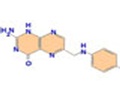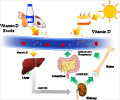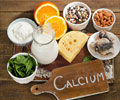The combination of calcium and vitamin D is more effective than calcium alone in preventing bone loss in elderly women, according to a new study accepted for publication in the Journal of Clinical Endocrinology & Metabolism (JCEM).
Previous studies have shown that high calcium intake can help prevent bone loss. This latest study, however, demonstrated that calcium therapy, although initially successful at preventing bone loss, was no different from placebo after three or five years.“In the long term, calcium alone loses its effectiveness in preventing bone loss. But there is good news,” said Dr. Richard Prince, professor at the University of Western Australia in Perth, Australia. “Our five-year study has shown that a combination of calcium and Vitamin D prevented bone loss for the duration of the study.”
Prince and fellow researchers evaluated the relative benefits of five years of calcium supplementation with or without vitamin D2 compared to placebo on hip bone mineral density (BMD) and bone related biochemistry in ambulatory elderly women aged 70–80 years.
The combination of 1200 mg of calcium a day and vitamin D 1000 IU maintained hip BMD constant for five years, while calcium alone after three or five years was no different than placebo.
The beneficial effect of calcium and vitamin D is considered to be related to reducing bone turnover, the process of old bone constantly being reabsorbed and replaced with new bone, and suppressing parathyroid hormone (PTH) concentrations in individuals with relatively high PTH levels. PTH is a hormone that regulates calcium levels by taking calcium from bones and releasing it into the blood.
Based on the results of this study, Prince suggests that older women increase dietary calcium to 2 grams per day as well as replace vitamin D that would normally be activated by sunlight, especially if there is evidence of vitamin D deficiency.
Advertisement
LIN/V











